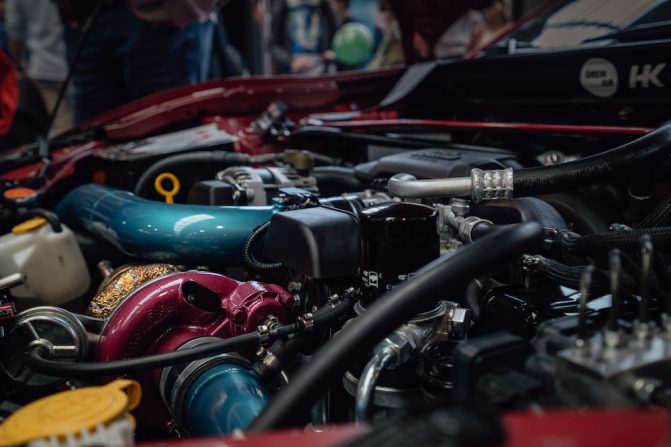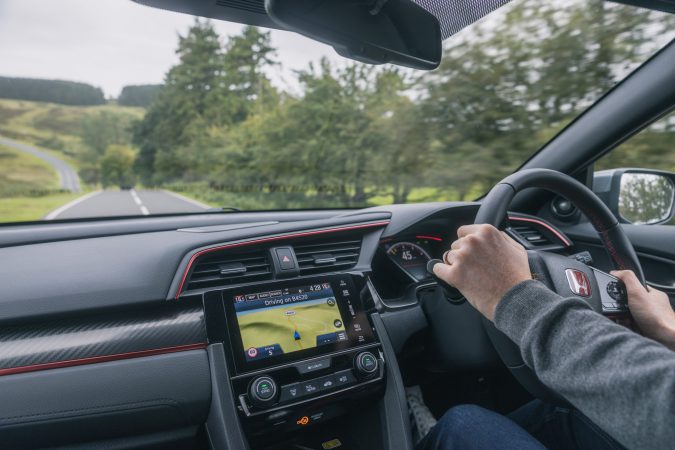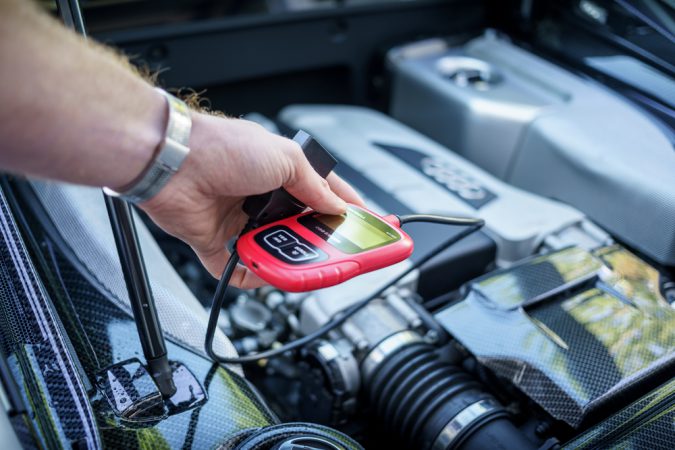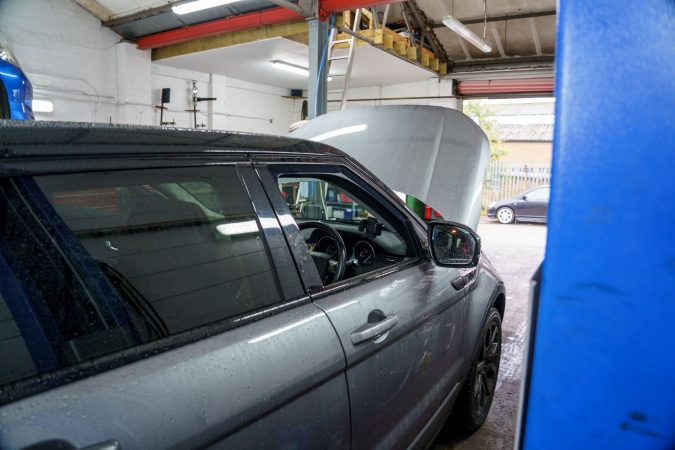The throttle is naturally an important component that connects the inputs of your right foot on the accelerator pedal and translates that into action by the engine. However, you may be surprised to find out that automotive throttle controls are quite complex in their operation. Since the 1980s, it’s only gotten more intricate with the advent of electronic throttle control systems.
So, how exactly do they work? In the olden days of mechanical linkages, stamping your foot on the go-fast pedal opens up the throttle. Thereby, it lets air into the engine, as fuel rushes through and gets compressed. A spark ignites, and kaboom, it combusts. If you want more speed, all you need to do is press down harder on the accelerator pedal, and the throttle opens up more and more.
But how has electronic throttle control changed this over a mechanical one? On top of that, what do you need to do should it fail? Well, let’s try to find out…
How Does An Electronic Throttle Control Work?
As mentioned earlier, your car’s throttle turns your engine into a huge pump. As the throttle opens, the air is squeezed into your engine, to then be mixed and compressed with fuel. Therefore, switching it from a mechanical linkage to an electronic throttle control – or “ETC” – doesn’t fundamentally affect its functionality. A clue can be found with its nicknames, ‘drive-by-wire‘ or ‘throttle-by-wire’.
Rather than using mechanical or analog actuation, the electronic throttle control takes your input through electronic signals. This way, when you step on the gas pedal, instead of directly opening the throttle itself, you send a series of 1s and 0s to the ‘accelerator pedal module’. Ideally, this module would have two or more independent sensors to maintain its reliability and redundancy.
Then, the pedal module would convert the pressure of your foot on the accelerator pedal into an electronic signal. It sends this to the electronic control unit, or the ‘electronic throttle body’, or ETB. This is similar to a mechanical throttle body, where the throttle valves are now opened or closed by an electric motor. Sometimes, the entire ETC system might take outside variables into account.
For example, it might send your throttle input to the car’s PCM or ECM (or ECU). That’s ‘powertrain control module’ or ‘engine control module’ (or ‘engine control unit’); just to clarify the lingo. In doing so, your car’s computer brain can best judge the throttle position – read: how much to open or close it by – based on the analysis of various sensors, for optimal performance and efficiency.
A few of those sensors include the:
- Throttle Position Sensor
- Vehicle Speed Sensor
- Engine Speed Sensor
- Accelerator Pedal Position Sensor
- Cruise Control Switches
What Are The Benefits Of An Electronic Throttle Control For Your Car
So then, now that we’ve taken some time to understand how an electronic throttle control works, what are its benefits? Does replacing the mechanical actuation with electronic signals really make it worthwhile? Indeed, there are numerous upsides to an electronic throttle control over a traditional mechanical one. Although, most of us might not notice these advantages afforded by an ETC.
That’s because most manufacturers engineer them to be seamless in feel, and are thus consistent with their predecessors. This is regardless of the engine temperature, altitude, loads, and so on. Therefore, it’s quite likely that the benefits of using an ETC would go unnoticed by most drivers, as managing the powertrain feels no different than before.
Yet, and while it works silently in the background, you can enjoy the many plus points of having an ETC over a mechanical linkage…
1. It Requires Less Maintenance
Old-school mechanical throttle systems have many moving parts. As such, it can be subject to faster wear and tear over time, thus necessitating more maintenance. If not, some or more of these parts could wear out and fail, rendering the entire throttle system compromised.
On the other hand, electronic throttle control has far fewer moving parts. Most of the time, it only needs to concern itself with analyzing and sending electronic signals, not actuating componentry. With few moving parts, it means that ETC suffers less wear, and requires far less maintenance.
2. Provides Greater Safety
Early on in its history, the image of electronic throttle control systems was blemished by recalls by certain marques concerning acceleration issues. But putting all these defects aside, an ETC system brings a number of safety advantages over an all-mechanical setup.
For starters, a mechanical throttle relies solely on the driver’s input to open and close the throttle. However, an electronic throttle control reads your input on the pedal, while cross-checking with analysis gathered by other sensors around the car. This way, it can sense how the car is doing.
For example, it can read whether the car is slipping and is losing traction. It could tell as to which of the wheels have more or less grip. Or, it might analyze input from the steering and brakes, as well. By taking this data into account, it can help to correct your errors and keep the car under control.
3. Enables Convenience While Driving
With modern cars today, we enjoy a great many conveniences and gadgets to make driving your car as relaxing as it can be. One such example is cruise control, or in some newer cars, adaptive cruise. Well, consider the fact that the high-tech cruise control systems of today won’t be possible without ETC.
Having an electronic throttle control enables your car’s entire throttle unit to take inputs from other sources. Your cruise control computer could plug into it and say, for instance, how much to speed up the car by, and what speed it should keep it at.
Both the ETC and cruise control talk to each other to maintain a set speed. Plus, other systems, such as traction control or electronic stability control, rely on an electronic throttle control too. It needs this to manage how much power to put down, overriding the input of your foot when necessary.
What Are The Signs Of A Failing Electronic Throttle Control?
Thus far then, we’ve learned a lot about the ETC. While we did make a point about how they are far more maintenance-friendly compared to their mechanical counterparts, electronic throttle control can still be prone to failure. It may be long-lasting and robust most of the time, but strain and/or damage could be enough to break any ETC system.
So, what are the symptoms of a faulty or soon-to-fail electronic throttle control that you need to be aware of?
1. Your Car Might Stall
If your car stalls, then it’s an indication that a problem persists with the powertrain. It might initially lead you to suspect the powertrain. However, look deep enough, and a defective ETC might instead be the cause.
Should you have it checked over with a technician, they could scan the car’s computer for any error codes with a diagnostics tool. In all, we can surmise that your throttle control is broken if your car decides to stall without any justification.
2. Rough Or Odd Idling
It could be narrowed down to a faulty electronic throttle control if your car’s idling is unusual. It may idle too high up or too low in the rev range. Otherwise, the idling might be normal at times, before then surging upwards randomly.
These random idle surges are a clear sign that something’s wrong with your car’s throttle control, be it electronic or mechanical. Alongside the sporadic and uneven idling, you might also notice your engine misfiring, jerking about, or a rough idle.
3. Sudden Acceleration
Now, this is a truly hazardous symptom of defective electronic throttle control and one that you ought to resolve quickly. If there’s a problem with the throttle control, your car might accelerate randomly and suddenly without any input from you.
This is rare since most ETC systems have some sort of built-in failsafe mode. However, it can still happen, which presents a major danger to you, your passengers, and other road users. Should your car still accelerate anyway, a broken ETC might exhibit poor acceleration or a lack of performance.
4. Check Engine Light Flashes On
The check engine light flashing is a warning sign to you that one or more components connected to the powertrain have failed. Or, that particular part might be on its way out. Therefore, and if you see the check engine light appear, have your car’s ECU scanned with an OBD diagnostics reader.
If so, it could tell you exactly what the problem is. One of those issues that could prompt the check engine light to come about is faulty electronic throttle control. Should this be the case, don’t delay a trip to the workshop, as a compromised ETC could put your life in danger.
5. Poor Fuel Mileage
While this symptom might take a while to notice, needing to pump more fuel is a clear sign that something’s up. Among the many causes of poor fuel mileage, damaged electronic throttle control is among them.
More specifically, the butterfly valve inside the electronic throttle body – which opens and closes to let air in – could be the point of failure. It might allow too much or too little air inside the engine, forcing your car’s ECM to compensate as needed by channeling in more or less fuel.
What Parts Of The Electronic Throttle Control On Your Car Could Be At Fault?
Since we’ve now looked into the symptoms of an electronic throttle control failure, it’s worth trying to find the straw that broke the camel’s back. In other words, precisely which part of the ETC unit is the one that failed? Well, there could be a few possible points of failure…
- The electrical connectors and wiring need to be checked. These connections are plugged straight into the electronic throttle body (ETB). If the wiring harnesses are frayed, deteriorated, or have been disconnected, electronic signals would fail to open or close the ETB’s valves as required.
- The air intake inlet is where the butterfly valve of the throttle body opens and closes to let air in. Over time, carbon build-up or debris around the inlet might clog up the airflow. Worse, it could prevent the valve from opening or closing entirely. These need to get cleaned up.
- Speaking of, the throttle body itself is among the few moving parts of the electronic throttle control system. As they age, a lack of servicing and care might cause them to fail. If so, they might not be able to actuate the opening and closing of the butterfly valve properly.
- A faulty throttle position sensor might go south, which can affect the working of the ETC. It might cause the ETC to not open or close correctly. Alternatively, it might still open or close at first, but it could later stay shut. If so, the engine can’t get any air, and it’ll choke the engine to death.
How Could You Manually Relearn The Electronic Throttle Control To Fix It?
So, let’s say that something is wrong with the electronic throttle control, but you think you can fix it with a relearn. A relearn is a process where you’re resetting the software and programming of your car’s electronic gadgetry. It’s similar to how you’d perform a hard reset of your computer or phone when it starts acting up. Hopefully, a similar reset could spark your ETC back to life again.
It can work, but ordinarily, this process is restricted to the installation of a new ETC system. If there are any signs of failure as we mentioned earlier, it’s not likely that a relearn could fix it. Still, it can be worth a go if you’re keen to try it out on your existing electronic throttle control. With that said, this is one process we recommend leaving to the professionals, as it can be tricky.
Besides, the relearn process could be as easy to do as clicking a button on your OBD reader. First and foremost, you need to do these pre-relearn check-ups to ensure the manual reset’s success:
- Check to make sure that your car’s error codes are all gone. If not, then do consider making repairs where it needs one. A relearn procedure can’t be completed if the check engine light is still on.
- Inspect all the engine hoses and connections to make sure there isn’t a vacuum leak. You should especially check the PCV system, oil dipstick, and reservoir, as well as the filler cap seals for any damage.
- Disconnect the battery terminal for 30 seconds – or more, depending on your car (refer to the owner’s manual) – to reset the onboard computer.
- Make sure that components vital to the engine aren’t faulty. These include the mass airflow sensor, intake manifold, and so on.
A Step-By-Step Guide To Manually Relearn/Reset The Electronic Throttle Control:
- Drive the car around for a bit (if you can) to bring it up to its normal operating temperature.
- Ensure that the ignition timing on your car hasn’t been tampered with. In other words, it’s been set as per the manufacturer’s recommendations.
- Turn of all accessories on your car such as the A/C, radio, heater, and so forth. This helps to prevent unnecessary load on the engine that could corrupt the ETC’s programming.
- With the accelerator pedal untouched, turn the ignition on without starting the engine for at least two seconds.
- Then, turn the ignition off for at least 10 seconds.
- Repeat steps 4 and 5 a few more times, by turning the ignition on for at least two seconds, and then turning it off for at least 10 seconds. This will inform the onboard computer of the position of the accelerator pedal, both opened and closed.
- Turn the ignition switch on, and wait three seconds.
- Immediately after waiting three seconds, you need to press and release the accelerator pedal five times within five seconds.
- After that, wait seven seconds, and then press the accelerator pedal down all the way. Keep doing this for approximately 20 seconds until the check engine light stops blinking and stays on.
- Within three seconds of the check engine light constantly staying on, release the accelerator pedal.
- Now, turn the engine back on, and let it idle. After 20 seconds, rev it a couple of times to make sure the idle speed is within the range.
- If the relearn was unsuccessful, then turn the key to the ‘off’ position. Then, wait 60 seconds before trying again.
What Could You Do To Help Maintain The Wellbeing Of The Electronic Throttle Control?
Much can be said about keeping your electronic throttle control in tip-top shape. After all, its failure could prompt so many issues to crop up. At the very least, it could affect your car’s performance and usability. Let it run like this for long enough, and it could result in catastrophic engine damage or component failure. At the other end of the spectrum, a faulty ETC could cost you your life.
Imagine if you accelerated suddenly into something, or it failed to accelerate when you need it to avoid an obstacle. With that in mind, is there anything that we could do to properly maintain and care for the ETC system as a whole? Indeed, here are a few tips to get you started…
- The air intake inlet of the throttle body could start to accumulate debris, grease, carbon deposits, or dirt if the air isn’t thoroughly filtered. With all this muck getting in the way, it could affect the butterfly valve opening and closing. You could easily clean all this away with a toothbrush, and some solvent.
- If the ETC does need its eventual replacement, bear in mind that you don’t have to replace the entire unit. Individual components such as the butterfly valves, the throttle body, or the wiring harness might be the only ones at fault. Simply replacing these few components alone instead of the whole module could save you a lot.
What If You Have To Replace It Anyway?
Should the aforementioned maintenance tips be too late for you, then you’ll have no choice but to spring up for a brand new electronic throttle control. They’re certainly not cheap, by any means. Nonetheless, and if you’re strategic about this, you could still save a few pennies (figuratively speaking) here and there during the replacement process.
The biggest of which is thanks to the positioning of the throttle body, which is easily accessible at the top of the engine. It can be replaced simply by disconnecting the wiring harness and then unbolting the ETB off the engine’s intake manifold. While a mechanic can do this in a jiffy, know that you could proceed with the replacement process at home if you’d like.
Doing so could save you from having to spend on costly labor rates. You could find numerous guides online of the how-to-dos on replacing the throttle body of the ETC – which is the most common source of failure – with ease. Even a rookie could do this fairly easily at home, without needing too many complex tools. All you need is a bit of time and a can-do attitude!
How Much Does An Electronic Throttle Control Replacement Cost?
Regardless of whether you’d opt for replacing it yourself, or to have it done by a mechanic, one thing’s for sure… The cost of replacing an electronic throttle control isn’t cheap. It will vary widely depending on what vehicle you drive, and the configuration of the ETC that was made for it, mind. Regardless, it’s a terribly expensive and bitter pill to swallow.
Plus, it’s a stark reminder to be diligent in taking good care of our cars. Here are a few examples of the costs associated with replacing the electronic throttle control system. It’ll give us a good idea of what it takes, across varying automotive classes and segments. Nevertheless, and while it might seem expensive, remember that it’s far cheaper than fixing up your engine should you ignore this.
- Ford F-Series – Parts: $210 to $450/ Labor: $60 to $90/ Total: $270 to $540
- Chevrolet Silverado – Parts: $320 to $900/ Labor: $120 to $150/ Total: $450 to $1,050
- Ford Focus – Parts: $310 to $410/ Labor: $40 to $80/ Total: $350 to $490
- Toyota Camry – Parts: $970 to $1,180/ Labor: $90 to $180/ Total: $1,060 to $1,360
- Toyota Corolla – Parts: $970 to $1,180/ Labor: $90 to $180/ Total: $1,060 to $1,360
- Nissan Altima – Parts: $370 to $380/ Labor: $50 to $120/ Total: $410 to $500
- Honda CR-V – Parts: $190 to $820/ Labor: $50 to $150/ Total: $240 to $970
- Honda Civic – Parts: $140 to $660/ Labor: $50 to $150/ Total: $190 to $810
- Ford Fusion – Parts: $210 to $450/ Labor: $60 to $100/ Total: $270 to $550
- Honda Accord – Parts: $150 to $570/ Labor: $50 to $100/ Total: $200 to $670
Electronic Throttle Control Facts:
- Electronic Throttle Control (ETC) uses electronic signals to control the throttle, converting pressure on the accelerator pedal into an electric signal, which is then sent to an electronic control unit to optimize efficiency and performance.
- ETC systems have fewer moving parts than mechanical throttle systems, which reduces wear and maintenance.
- ETC systems offer safety benefits over mechanical systems, as they can balance several factors that affect a car’s speed and direction, not just the driver’s foot on the pedal.
- Critics allege that electromagnetic interference can cause ETC systems to malfunction, leading to sudden, unintended acceleration.
- ETC systems are well insulated to prevent electromagnetic interference from compromising the system, and there are failsafes built into the system to prevent unexpected engine surges and acceleration.
- At the first sign of a problem, most ETC systems are designed to close the throttle and return to idle, preventing the throttle from opening.
- Each sensor position in ETC systems uses two sensors, and if a sensor malfunctions, or the two sensors in a given position report different readings, the system closes the throttle, idling the engine.
- ETC systems have a smart throttle motor that detects voltage or signals that didn’t come from the engine control module and is designed to shut the engine down if interference is detected.
- Car makers are adding brake overrides as an additional failsafe to allow driver inputs to override the throttle system if it malfunctions.
- While ETC systems may seem complex, they make driving a car easier and safer and can reduce maintenance.
Electronic Throttle Control – Conclusion
In summary, the electronic throttle control marks a positive evolution all-around in how your car’s throttle works. However, and while it presents numerous benefits for safety, performance, and efficiency, not taking good care of it could literally kill you. At the very least, it could cause major issues and damage to your engine. So, remember to take good care of that ETC.




